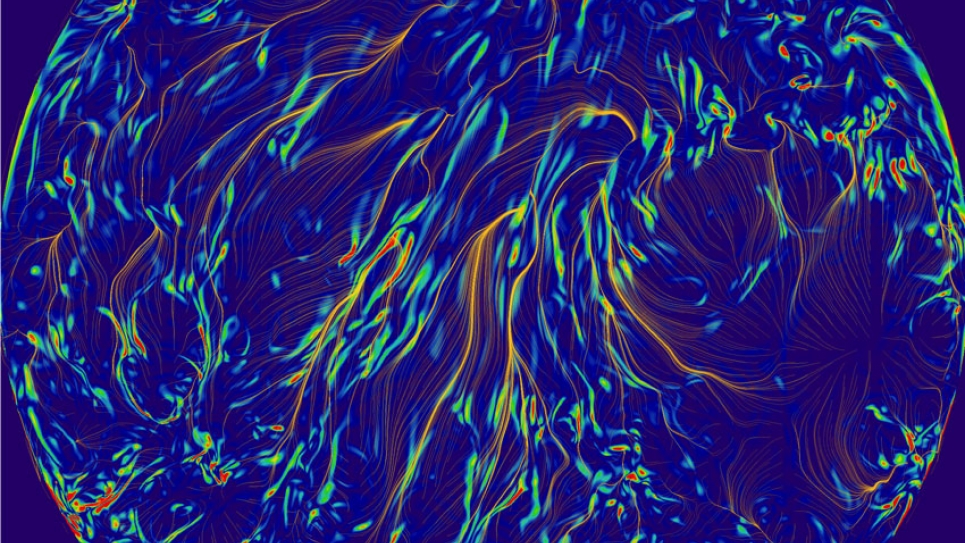
Convective Turbulence in Liquid Sodium
Turbulent Rayleigh-Bénard convection (RBC) is a type of heat transfer in which a constant temperature difference is maintained for a horizontal layer of fluid, heated from below. Because the fluid is confined, thin thermal and velocity boundary layers form near the top and bottom plates. One of the central unsolved problems in turbulent RBC is finding the transition to turbulence in these thin boundary layers. Simulations of turbulent RBC at high Rayleigh and low Prandtl numbers will help determine heat transport properties and predict transition parameters.
This INCITE project, will continue earlier research to advance numerical investigations of RBC to a parameter regime (Rayleigh number and Prandtl number) that has not been accessed before. The study’s two main scientific objectives are to determine what happens to the flow for liquid sodium at high Rayleigh numbers, and how the Nusselt number and Reynolds number scale with the Rayleigh number.
The previous year’s INCITE data provides preliminary supporting results that a new flow state exists for liquid sodium for a range of Rayleigh numbers Ra > 107. The team will run longer simulations at the same Rayleigh number to validate these results and run higher Rayleigh numbers to better understand this trend. Numerical simulations of turbulent RBC are based on the Nek5000 spectral element software package developed for solving the fluid flow equations on massively parallel supercomputers.
Simulations of turbulent heated convection at high Rayleigh and low Prandtl numbers will help researchers determine heat transport properties, in general, and the transition parameters for a turbulent boundary layer. Low-Prandtl-number convection has direct application to convection in liquid metals, such as gallium or sodium, and can shed light on convection in earth’s liquid metal core and in the sun.